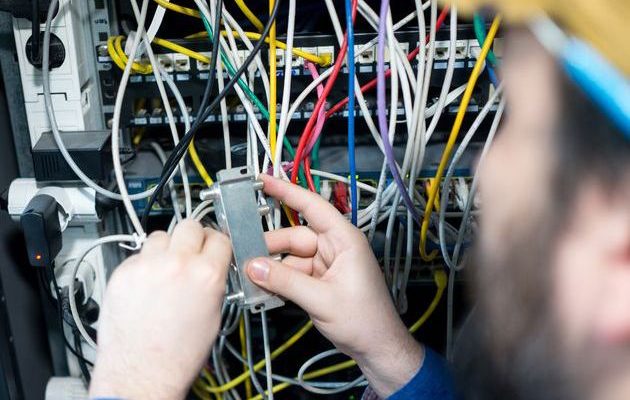On paper, the France Very High Speed plan is a success. At the end of 2022, 32 million subscribers benefited from quality internet access, including 18.1 million via fiber optics, making our country one of the most fiber-optic in Europe. This forced march deployment is not, however, without causing “collateral damage” on the ground.
For civil engineering work to bury the fiber or connect it, telecom operators rely on subcontractors who themselves often call on subcontractors. Paid for the line connected, these service providers at the end of the chain do not always bother with the technical obstacles they may encounter on their way.
Their technicians do not hesitate to force access to technical rooms or to carry out illegal disconnections. That is to say disconnect an existing subscriber to connect a new home to the fiber. Recently, elected officials from Haute-Savoie publicly complained about these technical degradations. The Paris-Saclay urban community even went so far as to prosecute Arcep, the telecoms policeman, before the Council of State.
Individuals are also making their dissatisfaction known. The transition from ADSL to fiber sometimes presents itself as a real obstacle course. According to the latest report from the Electronic Communications Mediation, nearly half of disputes between fiber subscribers and operators relate to technical problems.
The Mediation was seized in particular for “damage to the consumer’s home by the technician, the removal of the ADSL cable, cuts in electrical wires, ADSL link or TV antenna, damaged walls”.
Action plan and benchmarks at the FFT
Faced with this not very glorious picture of the deployment of fiber, operators had to react. In September, an action plan was decided by the players in the sector. It is based in particular on the taking of before/after photos, attached to the intervention reports, and the repair of the pooling points.
The French Telecoms Federation (FFT), representing the players in the sector, has also just published skills grids intended for principals – commercial operators, infrastructure operators – and their service providers.
The reference framework concerning subcontractors relates in particular to the training of their technicians, safety and engineering rules for optical work or good practices during work on the customer’s premises.
These skills benchmarks will be applied from the end of this month of April, specifies the FFT, and “audits will be carried out throughout the year in order to allow an assessment of the effectiveness of this system at the end of 2023”.
A “Fiber Passport” in the pilot phase in Berry
The initiative can also come from the field. An infrastructure operator 51% owned by Bouygues Energies & Services, Axione announced in early April the creation of a “Fiber Passport” intended to guarantee the quality of fiber optic connections. The criteria for obtaining this label are close to the FFT reference system since they relate to compliance with safety rules, the attention paid to customer relations and, of course, the quality of interventions.
This passport is issued to connection companies and their technicians in the form of an official card. “This card must be carried permanently by certified technicians during interventions,” explains Axione. “For any breach noted, the technician must carry out an adapted and formalized upgrade in order to recover his passport. »
Axione offers other infrastructure operators and commercial operators who wish to join this system. Since March, it has already been implemented in pilot mode in the Berry region.

AQPF, a state-of-the-art audit
Another label has also recently appeared. Baptized AQPF for Audit-Quality-Sustainability-Fibre, it is carried by a consortium, led by Innovance, a local semi-public company (SEML) bringing together fiber players and local authorities. It brings together two national associations: the Cercle Credo, which federates the fiber trades, and Avicca, which brings together communities involved in digital technology.
This label imposes “a regular and rigorous audit” to guarantee proper compliance with the technical requirements of a fiber optic network in its construction, operation and maintenance phases. By allowing principals and auditors to use a common language, labeling should facilitate understanding of the expected results between the different parties.
A standard brings together all the criteria required to obtain the AQPF label. It describes in particular the material and human resources to be implemented and the assessment of skills within identified examination centers (over half a day).
The official opening of the AQPF label will take place during the month of April with the establishment of a steering committee and a technical committee. A dedicated site will explain how to submit an application and how the examination to obtain the label takes place. This will be valid for two years.

